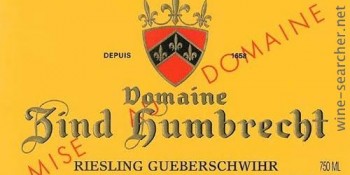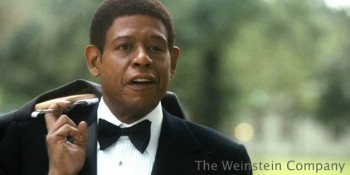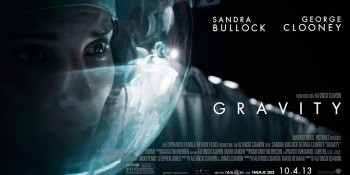From this distant vantage point, the Earth might not seem of any particular interest. But for us, it’s different. Consider again that dot. That’s here. That’s home. That’s us. On it everyone you love, everyone you know, everyone you ever heard of, every human being who ever was, lived out their lives.
— Carl Sagan, Pale Blue Dot: A Vision of the Human Future in Space
The year was 1990. Nelson Mandela was released from prison. East and West Germany reunified. The Hubble Space Telescope was launched. The Human Genome Project began. The United States engaged in Operation Desert Shield, in what would become the opening moves of the first Gulf War. Tim Berners-Lee created the first web server, which would become the foundation for the Internet when it was released to the public in 1991. Margaret Thatcher resigned as Prime Minister of England after serving in that capacity for 11 years. The Warsaw Pact began to collapse as Poland became the first of its member states to withdraw from that treaty and abolish its state socialist economy. The Channel Tunnel was completed. The Cold War ground to a halt.
And nearly four billion miles away from Earth, the Voyager 1 space probe turned its eye back toward home for the last time to take a series of pictures that would be known as the Family Portrait. It captured a shot of Earth, caught in a shaft of light — a single blue pixel hanging in the great vast blackness of eternity.
Voyager 1 was launched September 5, 1977. It completed its primary mission in November 1980, having taken detailed pictures of Jupiter and Saturn and their respective moons. It will continue operations until sometime in the year 2025, at which point the probe’s generators will no longer be able to power its sensors and transmitters, and it will continue eternally onward, a lonely traveler far from home. At the time of this writing, Voyager 1 has been in operation for 36 years, 6 months, and 3 days.
Voyager 1 and its sister probe, Voyager 2, each carries a golden record in the hope it encounters an advanced civilization. The record, an audio-visual disc, contains, among other things, images of the Solar System, human DNA, and the music of Beethoven, Mozart, and Chuck Berry. The golden record is more a time capsule than a serious attempt to communicate with another civilization.
Carl Sagan, the cosmologist and author who pushed for the inclusion of the golden record on the Voyager probes, said, “The spacecraft will be encountered and the record played only if there are advanced space-faring civilizations in interstellar space. But the launching of this ‘bottle’ into the cosmic ‘ocean’ says something very hopeful about life on this planet.”
Sagan was involved with assembling the contents of the golden record. He had been a researcher and a science advocate for many years, working on the cutting edge of the science of space exploration. Sagan had been instrumental in the discovery of Venus’ high surface temperatures. He hypothesized about the oceans of liquid gases on Saturn’s moon Titan. He was a member of the SETI Institute board of trustees, guiding its mission to search for extraterrestrial intelligence.
Sagan’s most well-known contribution to science is the television series Cosmos: A Personal Voyage, which premiered on PBS in 1980 and remained the most highly watched series on public television until the broadcast of Ken Burns’ documentary The Civil War in 1990, the same year Voyager would take its famous photograph. Sagan released a book, also titled Cosmos, at the same time as the television series, and it became the best selling science book ever published in the English language.
The Cosmos television series will be rebooted this Sunday. Cosmos: A Spacetime Odyssey will be presented by today’s most popular astronomer, Neil deGrasse Tyson; the executive producers are Seth MacFarlane and Sagan’s widow, Ann Druyan.
As the Voyager 1 probe reached the edge of the Solar System in 1990, Sagan managed to convince NASA to turn the probe’s cameras back toward the Earth. The narrow-angle camera that Voyager carried was far better suited to this sort of distance photography than the wide-angle camera’s the Mariner probes had carried. The photographs of the first six planets in the Solar System would be the last pictures Voyager 1 would take.
In his book Pale Blue Dot: A Vision of the Human Future in Space, Sagan would eloquently describe this picture of Earth, distant and alone. He would speak from his perspective as an early activist about the dangers of climate change, as a man who spent a sizable portion of his career struggling against anthropocentrism, and as a survivor of the Cold War, a time when the possibility of mutually assured destruction in a hail of nuclear fire was no further away than a single moment of irrational international saber-rattling.
Sagan’s words are powerful. (Read Sagan’s full reflection; listen to Sagan read it in full; view the image in full) He speaks of the reality that there is as yet no other world that we know of that can harbor human life. He reminds us that we have been engaged in our many internecine struggles over possession of a section of a tiny mote of dust.
Our planet is a lonely speck in the great enveloping cosmic dark. In our obscurity — in all this vastness — there is no hint that help will come from elsewhere to save us from ourselves.
Sagan speaks to the ties within humanity. We are alone in this universe, and yet we throw ourselves at each other in bloody conflict over minutiae of ideology and nearly indistinguishable differences in genetics. Sagan reminds us there is no help coming from elsewhere: if we are to survive as a people, as a species, we must look to each other for the answers.
Today, the world is a very different place than it was in 1990. With the end of the Cold War, the specter of nuclear apocalypse has largely disappeared. The Internet has created a world that is more interconnected than we had imagined possible. We have created an International Space Station that might become the staging area for future explorations of the Solar System and beyond. Computer technology has become far more compact and powerful than once thought possible. The world we live in today is, in many ways, the future predicted in the dreams of science fiction.
Despite the progress we as a species have made, we must regretfully acknowledge that Sagan’s words still ring true.
Think of the endless cruelties visited by the inhabitants of one corner of this pixel on the scarcely distinguishable inhabitants of some other corner. How frequent their misunderstandings, how eager they are to kill one another, how fervent their hatreds. Our posturings, our imagined self-importance, the delusion that we have some privileged position in the universe, are challenged by this point of pale light.
In the United States, political acrimony and partisanship have deadlocked the government. Africa and the Middle East remain hotbeds of ethnic and religious tensions, where being a member of the wrong tribe or worshipping the wrong god can lead to death at the hands of one’s neighbors. Venezuela and Ukraine are wracked by violent protests, and the ghost of the Soviet Union and Cold War imperialism stalk Crimea. The reality that we live in a post-9/11 world hits us every time we go to an airport, apply for a loan, or open a bank account.
We face the challenges of global climate change and its potentially devastating effects on our ability to produce food and have access to clean drinking water. Increasing denialism about the validity of scientific research has created a society ever more ignorant of the way the world around them works, leaving questions about how to handle genetically modified crops, vaccinations, and medical ethics in the hands of people willing to consider unrefuted scientific evidence as nothing more than an opinion.
While we may have made many amazing advancements, our future as a species is inexorably tied to the same realization that Sagan had when he spoke of the Pale Blue Dot. We feel that we are important, enthroned among our achievements. We need to be reminded on occasion of how big the universe is, and of how small a piece of it we have managed to master. When we look at the last picture Voyager 1 took of its home before turning its electronic eyes outward, toward the vast and unknowable distances between the stars, we should remember the words of Carl Sagan:
The aggregate of our joy and suffering, thousands of confident religions, ideologies, and economic doctrines, every hunter and forager, every hero and coward, every creator and destroyer of civilization, every king and peasant, every young couple in love, every mother and father, hopeful child, inventor and explorer, every teacher of morals, every corrupt politician, every ‘superstar,’ every ‘supreme leader,’ every saint and sinner in the history of our species lived there — on a mote of dust suspended in a sunbeam.












